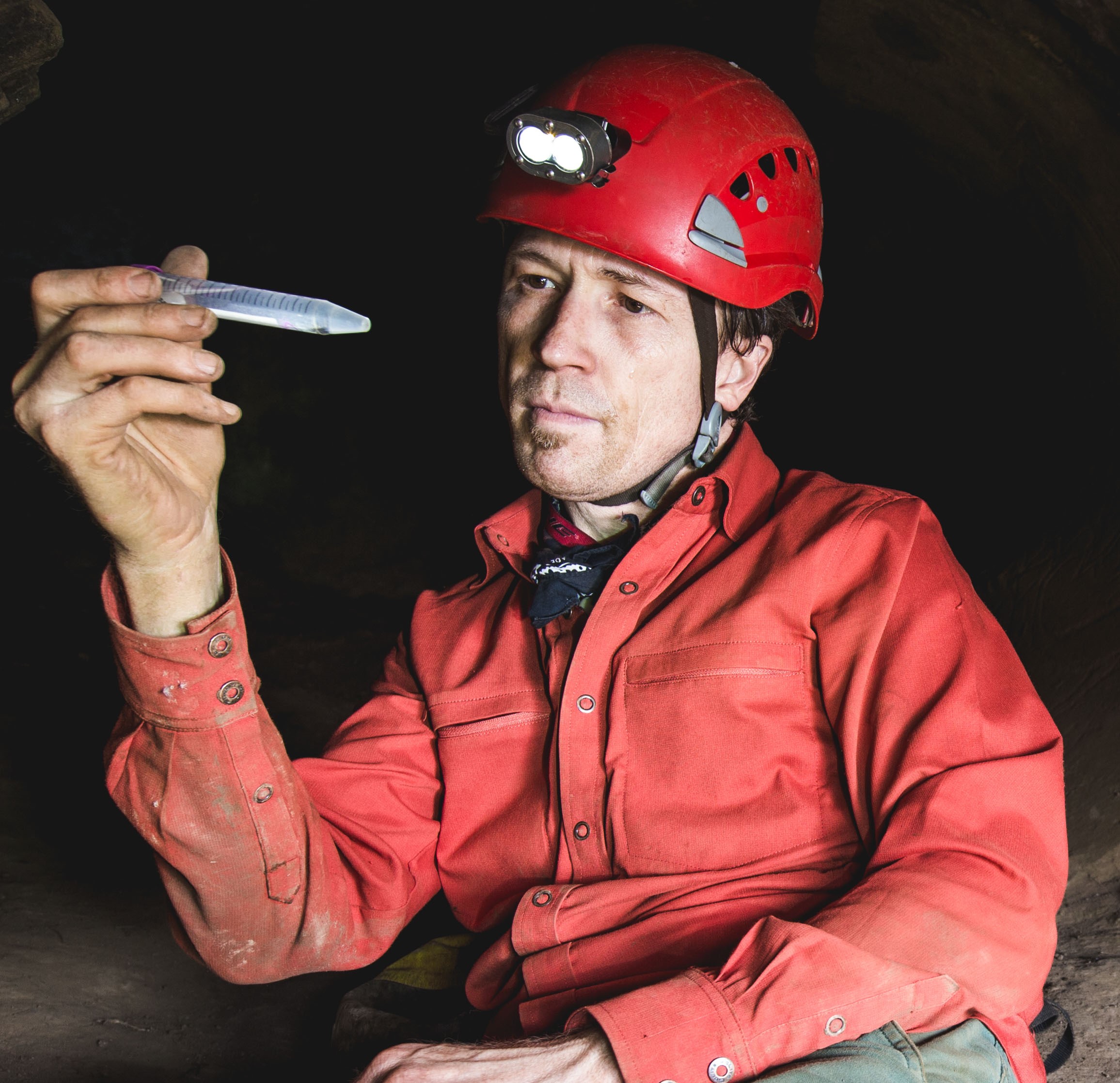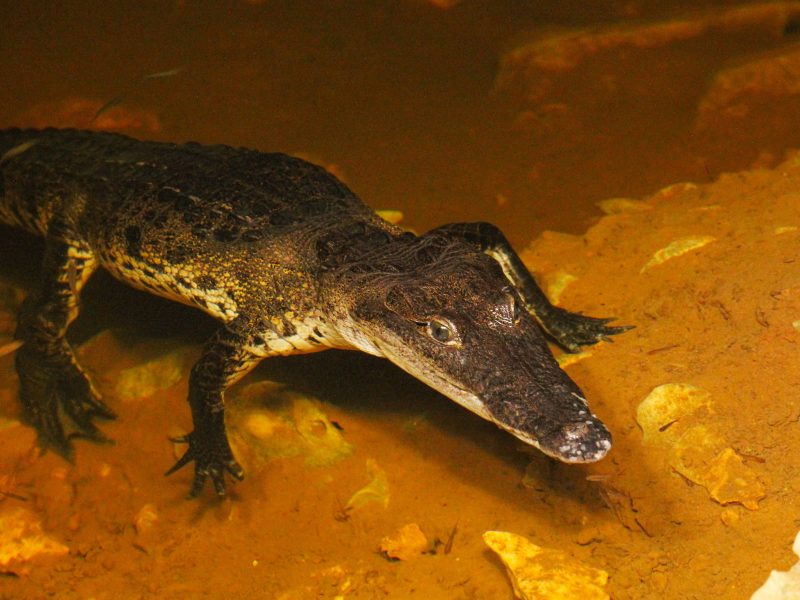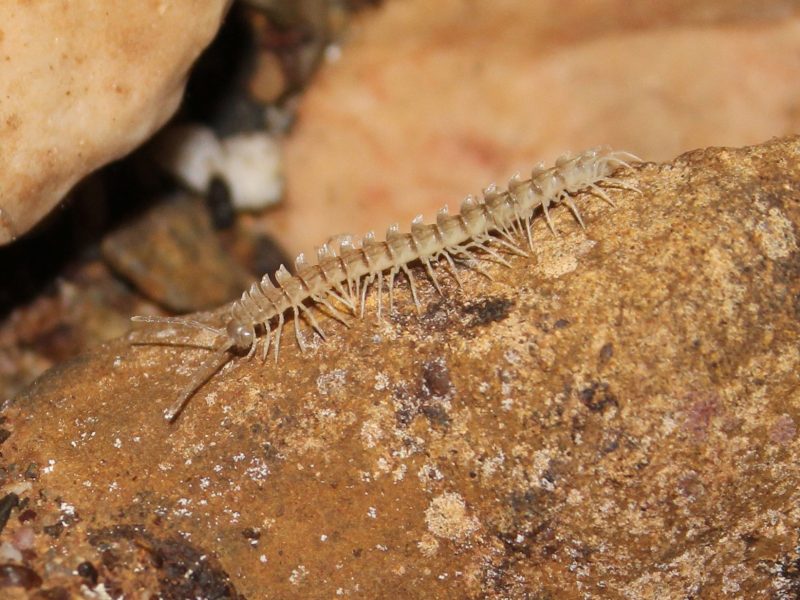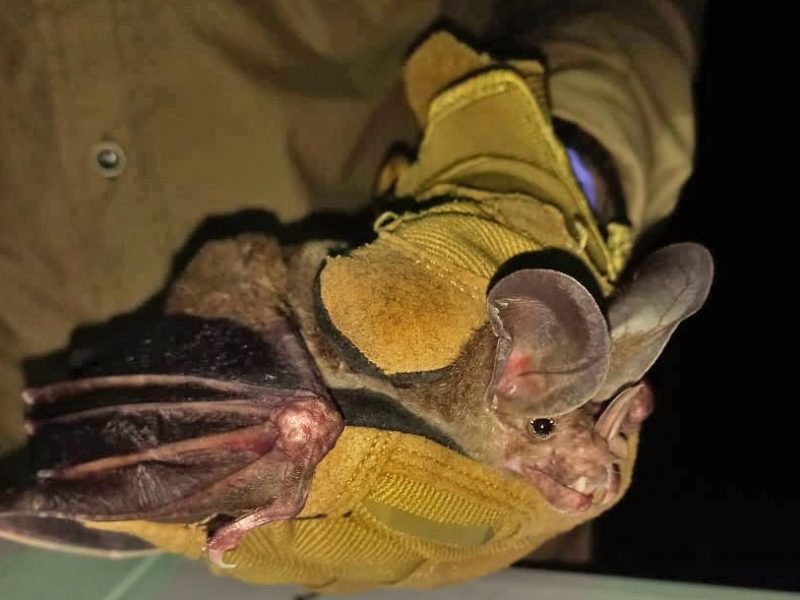
Jut Wynne - Assistant Research Professor
Cave Ecology & Exploration Lab
About the Lab
Our laboratory is dedicated to investigating various facets of cave ecology, focusing on four programmatic areas:
- Biogeography, Species Distributions, and Habitat Selection: We employ modeling techniques to elucidate biogeographical distribution patterns and habitat selection of cave-dwelling animals, with a specific emphasis on subterranean-restricted species and bats.
- Community Dynamics of Cave-Dwelling Animals: Our research explores the structure and dynamics of cave-dwelling animal communities to illuminate the intricate interrelationships within these populations.
- Global Climate Change and Other Human Disturbances: We aim to quantify the effects of global climate change and human-induced disruptions on animal populations inhabiting caves, with an emphasis on short-range endemic species.
- Mechanisms Underlying Subterranean Adaptation: Gaining insights into how a wide array of species selected caves has habitat and ultimately evolved an inextricable dependence on the subterranean realm.
Through research oriented toward conservation, our overarching objective is to enhance our comprehension of cave-dwelling animal communities, how they select habitat, and the consequences of human activities on these populations.
Our Current Projects
Country-Wide Assessment of Cave-dwelling Animals Across Belize: An ongoing endeavor focused on the characterization and management of animal communities using caves throughout Belize, Central America.
Inventory and Monitoring of Cave-Dwelling Arthropods and Bats in the American Southwest: We’re engaged in several projects to catalog and monitor arthropod and bat communities across the southwestern United States.
Conservation of Endemic Insects on Easter Island: An ongoing endeavor focused on the preservation and management of insects exclusive to Easter Island.
First Study to Examine Cave-dwelling Animal Communities in Bhutan: We will acquire data on bats, charismatic megafauna, small mammals, and subterranean-adapted arthropods to gather valuable information for the conservation of vulnerable Bhutanese cavernicoles and their habitats.
NB: We go beyond Earth to explore emerging technologies and conduct comprehensive assessments of caves across the solar system. Presently, an undergraduate student is spearheading a global inventory of caves on Europa, one of Jupiter’s icy moons.
Significance
Cave ecosystems possess distinctive attributes, which include simpler community structures and relatively closed systems compared to surface ecosystems. Nutrients in the subterranean environment originate from the surface through mechanisms including flood detritus, bats, and dissolved organic material—resulting in the formation of intriguing yet elementary communities. Organisms adapted to subterranean habitats often display unique evolutionary modifications, and their movements underground has given rise to some remarkable speciation events. In the aggregate, these factors make caves extraordinary laboratories for investigating these intricate ecological and evolutionary interactions.
Crucially, we highly value our collaborations with international partners and actively engage in educational outreach to strengthen ties with local communities and their natural heritage. Our mission is to inspire and empower local communities to effectively manage and safeguard sensitive cave-dwelling species, along with the vulnerable ecosystems that sustain them.
Lab Personnel
Jeremy Vandenberg, M.S. student (Biology). Thesis project: Characterizing summer ecology, diet, and year-round activity of cave-dwelling bats in northern Arizona
Liliya Gilroux, undergraduate student (Environmental Science). Research project: Cave Arthropod Diversity of Rapa Nui
Eliana Pearlman, undergraduate student (Astronomy and Geology, Mount Holyoke College). Research Project: Inventory of Potential Subsurface Access Points on Europa
Katie Puckett, undergraduate student (Biology). Research project: Cliff-dwelling Arthropod Diversity of Rapa Nui
Jenelle Roberts, undergraduate student (Biology, University of Belize). Research Project: Analyzing Water Temperature Data to Understand Cave-dwelling Crocodile Thermoregulation
Lab Alumni
Samantha Hershaurer, former undergraduate student (Biology). Research Projects: (1) Notes on the arthropods of Salas y Gómez island, Chile (2) Cave biota of Sierra de las Nieves Natural Park, Andalucía, Spain (3) Genetic evidence of subterranean dispersal of two relict springtail species from Sierra de las Nieves Natural Park, Andalucía, Spain
Michelle Kearney, former undergraduate student (Astronomy). Research Project: Robotic exploration potential of Martian caves
Sofia Langran, undergraduate student (Biology). Research Project: Bat Richness and Activity at Earth Crack Caves, Wupatki National Monument, Arizona
Quinton Redmond, undergraduate student (Environmental Science). Research Project: Subterranean arthropods of Runaway Creek Nature Reserve, Belize
Student opportunities and past publications
Lab Opportunities Accordion Closed
Undergraduate students will be required to dedicate approximately 8-10 hours per week to lab activities. Students will be registered for BIO 485 and will earn credit for their lab involvement. Most students will either be assigned or develop a specific project to pursue and will showcase their findings at UGRADS. Importantly, there will be opportunities to apply for grants such as Interns to Scholars, the Hooper Undergraduate Research Award, and the NASA Space Grant.
Volunteer lab work opportunities for Fall Semester 2023 include: (1) sorting, processing, and analyzing cave-dwelling arthropod specimens from Rapa Nui; (2) sorting, processing, and analyzing cave-dwelling arthropod specimens from Belize caves; (3) analyzing and summarizing trail camera data from Belize caves; (4) processing, analyzing, and interpreting bat call data from Belize caves. Participant will be contingent upon successful completion of an interview process.
Field Opportunities Accordion Closed
The Tropical Ecology Field School in Belize is usually held during the final two weeks of June. More details may be obtained from the Center for International Education.
Graduate Research Opportunities Accordion Closed
Please contact Dr. Wynne to inquire regarding potential opportunities.
Publications Involving Undergraduate Students Accordion Closed
Wynne, J.J., T.N. Titus, […], M.L. Kearney, & 33 others. 2022. Fundamental science and engineering questions in planetary cave exploration. Journal of Geophysical Research: Planets 127, e2022JE007194.
Kearney, M.L., J.J. Wynne, G.E. Cushing, N.M. Bardabelias, & N.G. Barlow. 2021. Robotic exploration potential of Martian caves. Abstract #2078, 52nd Lunar and Planetary Science (LPSC) Virtual Conference.
Hershauer, S., S.Y. Pakarati, & J.J. Wynne. 2020. Notes on the arthropod fauna of Salas y Gómez Island, Chile. Revista Chilena de Historia Natural 93: 1–6.
Wynne, J.J., J.R. Boyero Gallardo, E. Pardo Igúzquiza, S. Hershauer, et al. 2019. La biota de las cuevas del Parque Natural de la Sierra de las Nieves, Andalucía, con recomendaciones para futuras investigaciones y gestión. Andalucía Subterránea 31: 30–50.
Publications Accordion Closed
* Undergraduate student author
Peer-Reviewed Articles
Wynne, J.J., M. Tellez, K. Hartwell, & 7 others. 2023. Cave-dwelling crocodiles of central Belize. International Journal of Speleology 52: 75–81.
Malaska, M.J., A. Schoenfeld, J.J. Wynne, & 5 others. 2022. Potential caves: Inventory of subsurface access points on Titan. Journal of Geophysical Research: Planets, 127: e2022JE007512.
Wynne, J.J., J.E. Mylroie, T.N. Titus, & 27 others. 2022. Planetary caves: A solar system view on processes and products. Journal of Geophysical Research: Planet, 127: e2022JE007303.
Wynne, J.J., S. Taiti, S. Pakarati, & A.C. Castillo-Trujillo. 2022. Range extension of the endemic terrestrial isopod, Hawaiioscia rapui, reveals the dispersal potential for the genus across the South Pacific. Bishop Museum Occasional Papers 147: 1–12.
Wynne, J.J., T.N. Titus, […], M.L. Kearney*, & 33 others. 2022. Fundamental science and engineering questions in planetary cave exploration. Journal of Geophysical Research: Planets 127: e2022JE007194.
Titus, T.N., J.J. Wynne, M.D. Jhabvala, & N.A. Cabrol. 2022. Using near–surface temperature data to calibrate high-resolution thermal infrared imagery and estimate physical surface properties. MethodsX 101644.
Mammola, S., M.B. Meierhofer, […], J.J. Wynne, & 34 others. 2022. Towards evidence-based conservation of subterranean ecosystems. Biological Reviews 97: 1476–1510.
Ferreira, R., E. Bernard, […], J.J. Wynne, & 93 others. 2022. Brazilian cave heritage under siege. Science 375: 1238–1239.
Wynne, J.J., J. Jenness, D.L. Sonderegger, T.N. Titus, et al. 2021. Advancing cave detection with terrain analysis and thermal imagery. Remote Sensing 13: 3578.
Wynne, J.J., F.G. Howarth, S. Mammola, R.L. Ferreira, & 52 others. 2021. A conservation roadmap for the subterranean biome. Conservation Letters 14: e12834.
Titus, T.N., J.J. Wynne, M.J. Malaska, & 38 others. 2021. A roadmap for planetary cave science and exploration. Nature Astronomy 5: 524–525.
Sánchez-Fernández, D., D.M.P. Galassi, J.J. Wynne, P. Cardoso, et al. 2021. Don’t forget subterranean ecosystems in climate change agendas. Nature Climate Change 11: 458–459.
Mammola, S., […], J.J. Wynne & 19 others. 2020. Fundamental research questions in subterranean ecology. Biological Reviews 95: 1855–1872.
*Hershauer, S., S.Y. Pakarati, & J.J. Wynne. 2020. Notes on the arthropod fauna of Salas y Gómez Island, Chile. Revista Chilena de Historia Natural 93: 1–6.
Feng, Z., J.J. Wynne, & F. Zhang. 2020. Four new hypogean pseudoscorpions (Pseudoscorpiones, Neobisiidae) from Guizhou, China. Subterranean Biology 34: 61–98.
Feng, Z., J.J. Wynne, & F. Zhang. 2019. Two new subterranean-adapted pseudoscorpions (Pseudoscorpiones: Neobisiidae) from Beijing, China. Zootaxa 4661: 145–160.
Liu, W., & J.J. Wynne. 2019. Cave millipede diversity with descriptions of six new species from Guangxi, China. Subterranean Biology 30: 57–94.
Mammola, S., […], J.J. Wynne & 30 others. 2019. Scientists’ warning on the conservation of subterranean ecosystems. BioScience 69: 641–650.
Wynne, J.J., J.R. Boyero Gallardo, E. Pardo Igúzquiza, S. Hershauer*, et al. 2019. La biota de las cuevas del Parque Natural de la Sierra de las Nieves, Andalucía, con recomendaciones para futuras investigaciones y gestión. Andalucía Subterránea 31: 30–50.
Wynne, J.J., F.G. Howarth, S. Sommer, & B.G. Dickson. 2019. Fifty years of cave arthropod sampling: techniques and best practices. International Journal of Speleology 48: 33–48.
Gao, Z., J.J. Wynne, & F. Zhang. 2018. Two new species of cave-adapted pseudoscorpions (Pseudoscorpiones, Neobisiidae, Chthoniidae) from Guangxi, China. Journal of Arachnology 46: 345–354.
Wynne, J.J., S. Sommer, F.G. Howarth, B.G. Dickson, & K.D. Voyles. 2018. Capturing arthropod diversity in complex cave systems. Diversity and Distributions 24: 1478–1491.
Bernard, E.C., & J.J. Wynne. 2017. Disparrhopalites naasaveqw n. sp. from caves on Wupatki National Monument, Arizona, and synonymy of Dietersminthurus Palacios-Vargas, Cuéllar & Vázquez, 1998 with Disparrhopalites Stach, 1956 (Collembola: Sminthuridae). Zootaxa 4319: 77–90.
Cotoras, D.D., J.J. Wynne, L. Flores, & C. Villagra. 2017. The spiders of Rapa Nui revisited. Bishop Museum Occasional Papers 120: 1–17.
Wynne, J.J. 2017. White-nose syndrome decontamination procedures for backcountry subterranean projects. Park Science 33: 16–28.
MacKenzie, S., […], J.J. Wynne, & 19 others. 2016. THEO Mission Concept: Testing the Habitability of Enceladus’s Ocean. Advances in Space Research 58: 1117–1137.
Wynne, J.J., & W.A. Shear. 2016. A new millipede (Austrotyla awishashola, n. sp., Diplopoda, Chordeumatida, Conotylidae) from New Mexico, USA, and the importance of cave moss gardens as refugial habitats. Zootaxa 4084: 285–292.
Taiti, S., & J.J. Wynne. 2015. The terrestrial Isopoda (Crustacea, Oniscidea) of Rapa Nui (Easter Island), with descriptions of two new species. ZooKeys 515: 27–49.
Bernard, E.C, F.N. Soto-Adames, & J.J. Wynne. 2015. Collembola of Rapa Nui (Easter Island) with descriptions of five endemic cave-restricted species. Zootaxa 3949: 239–267.
Harvey, M.S., & J.J. Wynne. 2014. Troglomorphic pseudoscorpions (Arachnida: Pseudoscorpiones) of northern Arizona, with descriptions of two new short-range endemic species. Journal of Arachnology 42: 205–219.
Wynne, J.J., J.R. Boyero Gallardo, E. Pardo Igúzquiza, S. Hershauer, et al. 2014. La biota de las cuevas del Parque Natural de la Sierra de las Nieves, Andalucía, con recomendaciones para futuras investigaciones y gestión. Andalucía Subterránea 31: 30–50.
Wynne, J.J., & K.D. Voyles. 2014. Cave-dwelling arthropods and vertebrates of North Rim Grand Canyon, with notes on ecology and management. Western North American Naturalist 74: 1–17.
Peck, S.B., & J.J. Wynne. 2013. Ptomaphagus parashant new species (Coleoptera: Leiodidae: Cholevinae: Ptomaphagini): the most troglomorphic cholevine beetle known from Western North America. The Coleopterists Bulletin 67: 309–317.
Wynne, J.J. 2013. Inventory, conservation and management of lava tube caves at El Malpais National Monument, New Mexico. Park Science 30: 45–55, +appendix.
Mockford, E.L., & J.J. Wynne. 2013. Genus Cyptophania Banks (Psocodea: Lepidopsocidae): Unique features, augmented description of the generotype, and descriptions of three new species. Zootaxa 3702: 437–449.
Allner, M., C. McKay, L. Coe, J. Rask, J. Paradise, & J.J. Wynne. 2010. NASA’s explorer school and Spaceward Bound programs: Insights into two education programs designed to heighten public support for space science initiatives. Acta Astronautica 66: 1280–1284.
Shear, W.A., S.J. Taylor, J.J. Wynne, & J.K. Krejca. 2009. Cave millipeds of the United States. VIII. New genera and species of polydesmidan millipeds from caves in the southwestern United States (Diplopoda, Polydesmida, Polydesmidae and Macrosternodesmidae). Zootaxa 2151: 47–65.
Azua-Bustos, A., C. Gonzalez, R. Mancilla, L. Salas, R. Palma, J.J. Wynne, & C.P. McKay. 2009. Ancient photosynthetic eukaryote biofilms in an Atacama Desert coastal cave. Microbial Ecology 58: 485–496.
Wynne, J.J., T.N. Titus, & G. Chong Diaz. 2008. On developing thermal cave detection techniques for Earth, the Moon and Mars. Earth and Planetary Science Letters 272: 240–250.
Cushing, G.E., T.N. Titus, J.J. Wynne, & P.R. Christensen. 2007. THEMIS observes possible cave skylights on Mars. Geophysical Research Letters 34: L17201.
Jenness, J., & J.J. Wynne. 2005. Cohen’s Kappa and classification table derived metrics: An ArcView 3x extension for accuracy assessment of spatially explicit models. USGS-Southwest Biological Science Center, Open-File Report OF 2005-1363, December 2005. 86pps.
Wynne, J.J., & W. Pleytez. 2005. Sensitive ecological areas and species inventory of Actun Chapat Cave, Vaca Plateau, Belize. Journal of Cave and Karst Studies 67: 148–157.
Book and Book Chapters
Wynne, J.J. 2022. Cave Biodiversity: Speciation and Diversity of Subterranean Animals. John Hopkins University Press (JHUP), MD, Pps. 352.
Howarth, F.G. & J.J. Wynne. 2022. Influence of the physical environment on terrestrial cave arthropod diversity. In Cave Biodiversity: Speciation and Diversity of Subterranean Animals (J.J. Wynne, editor), 1–56, JHUP.
Wynne, J.J., M.L. Niemiller, & K.J. Chapin. 2022. Evolutionary models influencing subterranean speciation. In Cave Biodiversity: Evolution and Speciation of Subterranean Animals (J.J. Wynne, editor), 57–94, JHUP, MD.
Zhao, Y., A.G. Gluesenkamp, J.J. Wynne, et al. 2022. Diversity, distribution, and conservation of cavefishes of China. In Cave Biodiversity: Speciation and Diversity of Subterranean Animals (J.J. Wynne, editor), 271–305, JHUP, MD.
Published Abstracts
Malaska, M.J., A. Schoenfeld, J.J. Wynne, K. Mitchell, O. White, A. Howard, J. Moore, & O. Umurhan. 2023. Caves on Saturn’s moon Titan. 4th International Planetary Caves Conference, Lanzarote, Spain.
*Kearney, M.L., J.J. Wynne, G.E. Cushing, N.M. Bardabelias, & N.G. Barlow. 2021. Robotic exploration potential of Martian caves. Abstract #2078, 52nd Lunar and Planetary Science (LPSC) Virtual Conference.
Phillips-Lander, C.M., J.J. Wynne, N. Chanover, C. Demirel-Floyd, K. Uckert, K. Williams, T.N. Titus, J. Blank, P. Boston, K. Mitchell, A. Kereszturi, J. Martin-Torres, D. Wyrick, S. Shkolyar, & K. Retherford. 2020. Mars Astrobiological Cave and Internal habitability Explorer (MACIE): A New Frontiers Mission Concept. 38th Mars Exploration Program Analysis Group, Jet Propulsion Laboratory, Pasadena, CA.
Wynne, J.J., C.M. Phillips-Lander, & T.N. Titus. 2020. Proposed mission architecture and technology requirements for robotic and human exploration of martian caves. Abstract # 1634, 51st LPSC, Houston, TX.
Phillips-Lander, C.M., J.J. Wynne, A. Parness, K. Uckert, N. Chanover, T.N. Titus, K. Williams, C. Demirel, E. Eshelman, A. Stockton, S. Johnson, & D. Wyrick. 2020. MACIE: Mars Astrobiological Caves and Internal Habitability Explorer (Mission Concept). 51st LPSC, Houston, TX.
Wynne, J.J., C.M. Phillips-Lander, & T.N. Titus. 2020. Proposed mission architecture and technology requirements for robotic and human exploration of martian caves. Abstract # 1043, 3rd International Planetary Caves Conference, San Antonio, TX.
Phillips-Lander, C.M., J.J. Wynne, A. Parness, K. Uckert, N. Chanover, T.N. Titus, K. Williams, C. Demirel, E. Eshelman, A. Stockton, S. Johnson, & D. Wyrick. 2020. MACIE: Mars Astrobiological Caves and Internal Habitability Explorer (Mission Concept). 3rd International Planetary Caves Conference, San Antonio, TX.
Phillips-Lander, C.M., J.J. Wynne, & A. Stockton. 2019. Influence of the cave environment on habitability & biosignatures: Implications for finding life on Mars. 2019 AbSciCon, Bellevue, WA.
Wynne, J.J., J. Jenness, M.D. Jhabvala, T.N. Titus, & D. Billings. 2015. Detecting terrestrial caves by applying topographic analysis techniques to thermal imagery. Abstract #9029, 2nd International Planetary Caves Conference, Flagstaff, AZ.
Newcomer, K.B., J. Moersch, N.A. Cabrol, E. Grin, J.J. Wynne, & M. Chojnacki. 2011. Evaluation of a proposed technique for identifying Martian caves in THEMIS infrared images. Abstract # 2739. 42nd LPSC, League City, TX.
Titus, T.N., J.J. Wynne, M.D. Jhabvala, G.E. Cushing, P. Shu, & N.A. Cabrol. 2011. Cave detection using oblique thermal imaging, Abstract #8024, 1st International Planetary Caves Workshop, Carlsbad, NM.
Ruby, D., J.J. Wynne, & T.N. Titus, 2011. Novel volumetric cave mapping process utilizing existing technologies. Abstract # 831. 1st International Planetary Cave Research Workshop, Carlsbad, NM.
Titus, T.N., J.J. Wynne, D. Ruby, & N.A. Cabrol. 2010. The Atacama Desert cave Shredder: A case for conduction thermodynamics, Abstract #1096, 41st LPSC, Houston, TX.
Carol, N.A., E.A. Grin, & J.J. Wynne. 2009. Detection of caves and cave-bearing geology on Mars. Abstract # 1040. 40th LPSC, Houston, TX.
Wynne, J.J., T.N. Titus, M.D. Jhabvala, G.E. Cushing, N.A. Cabrol, & E.A. Grin. 2009. Distinguishing caves from non-cave anomalies: Lessons for the Moon and Mars, Abstract #2451, 40th LPSC, Houston, TX.
Wynne, J.J., T.N. Titus, C.A. Drost, R.S. Toomey III, & K. Peterson. 2008. Annual thermal amplitudes and thermal detection of Southwestern U.S. caves: Additional Insights for Remote Sensing of Caves on Earth and Mars, Abstract #2459, 39th LPSC, Houston, TX.
Wynne, J.J., T.N. Titus, M.G. Chapman, G. Chong, C.A. Drost, J.G. Kargel, & R.S. Toomey. 2007. Thermal behavior of Earth caves: A Proxy for gaining inference into Martian cave detection. Abstract # 2378. 37th LPSC, Houston, TX.
Popular Science Articles
Wynne, J.J. 2021. Belize’s Maya Forest Corridor a ‘missing link’ to giant rainforest reserve. Mongabay.
Titus, T.N., C.M. Phillips-Lander, P.J. Boston, J.J. Wynne, & L.A. Kerber. 2020. Planetary cave exploration progresses. EOS 101: 1–9.
Wynne, J.J. 2017. Spanish caves reveal a trove of biological treasures. Scientific American.
Wynne, J.J. 2017. Endemic insects of Rapa Nui: Searching for vestiges of past ecosystems. The Explorers Journal 95 (2): 14–25.
Wynne, J.J. 2017. The hunt for endemic insects on Easter Island. Scientific American.
Wynne, J.J., T.N. Titus, & P.J. Boston. 2016. Planetary caves’ role in astronaut bases and the search for life. EOS, 97.
Wynne, J.J. 2016. The scientific importance of caves in our solar system. NSS News 03/2016: 4–7.
Wynne, J.J. 2014. Reign of the Red Queen: The future of bats hangs in the balance. The Explorers Journal 92: 40–45.
Wynne, J.J., & C.A. Drost. 2009. Southwest caves reveal new forms of life: U.S. Geological Survey Fact Sheet 2009-3024, 2 p.


